“Once modded, it can take you from delicately sparkling cleans to ferociously thrilling crunch”: The Watkins Westminster Mk II is the affordable vintage tube amp you can turn into the best little Marshall you’ve never heard
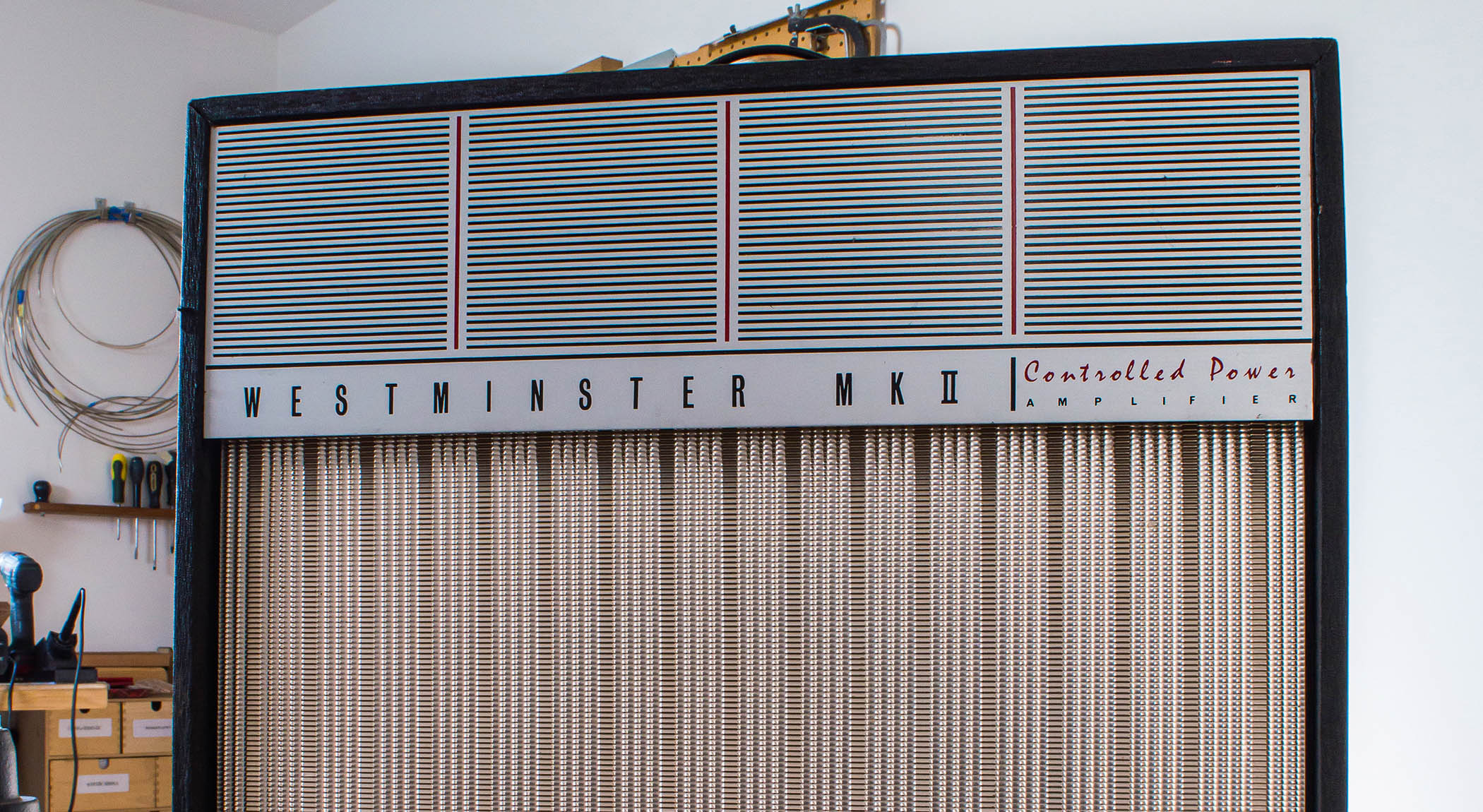
- WARNING: Working on tube amplifiers is dangerous and potentially lethal, so this feature is intended as an overview, rather than a step by step guide to maintaining and modifying. If you’re unsure how to make an amplifier safe to work on, please leave it to a qualified professional.
At the risk of offending Burns, Grimshaw and Shergold enthusiasts, British guitars of the vintage era have never been as highly regarded as the big American brands. In contrast, Vox and Marshall amplifiers always held their own, but some pieces still remain under the radar and are therefore surprisingly affordable.
In the scheme of things, Watkins amplifiers are largely overlooked and their most famous product remains the Copicat tape echo. The only Watkins amplifier that does excite collectors and players is the V-front Dominator.
This is hardly surprising given that some consider the Dominator to have ‘inspired’ Marshall’s 18-watt models in much the same way that Fender’s Tweed Bassman inspired the JTM45.
Consequently, asking prices in the UK tend to be in the £1,500 to £2,000 range, depending on condition and originality. Granted, that isn’t necessarily ‘affordable’, but around £500 might buy you a Watkins Westminster instead.
The Westminster
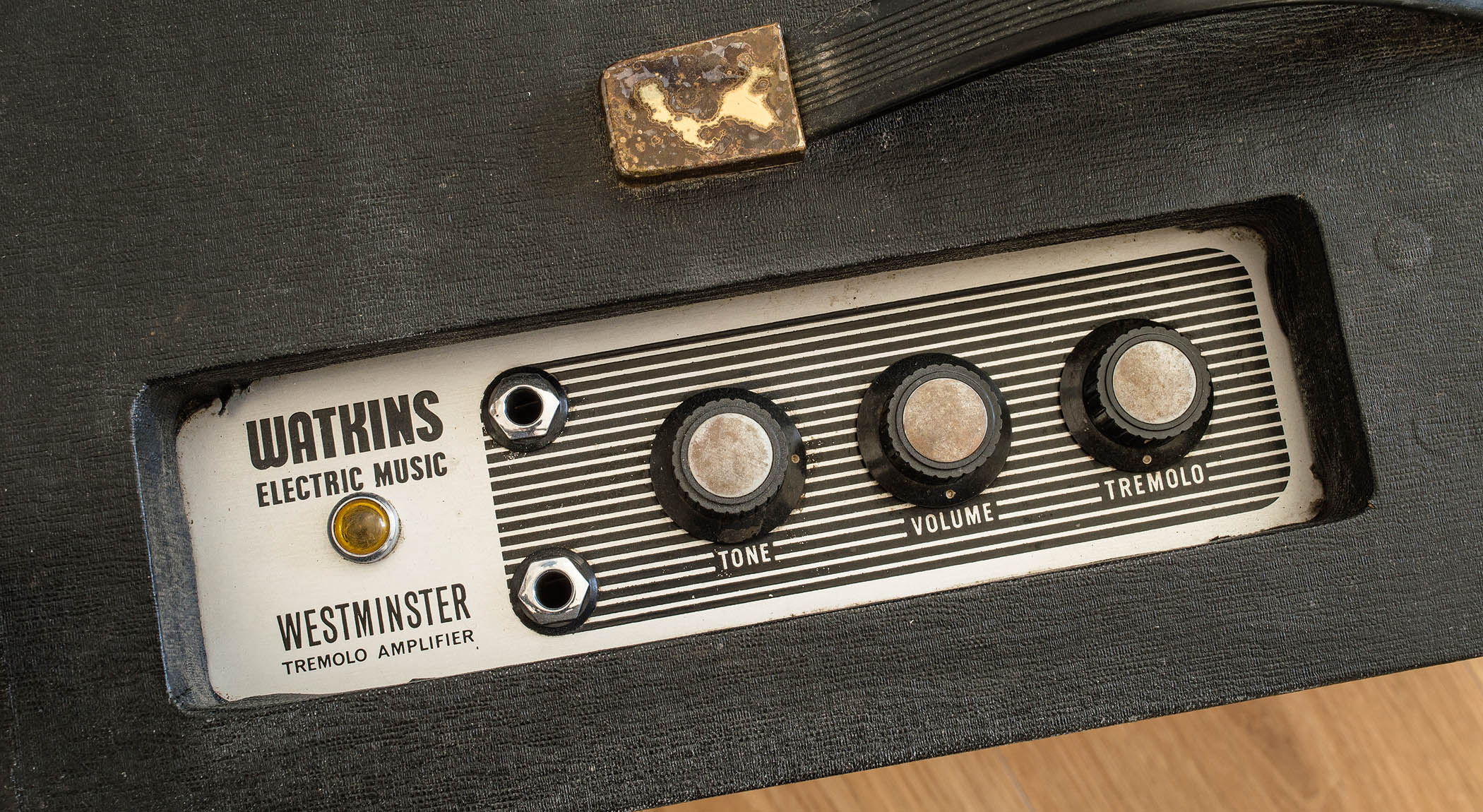
The Watkins Westminster was produced with various circuits, valve line-ups and cabinets before the Westminster MK II was introduced around 1963. The new combo cabinet featured a more aggressive-looking metal speaker grille and silver faceplates with bold lettering and black and red graphics.
But the circuit and construction style carried over from earlier versions with a single channel, volume and tone controls, and a tremolo with adjustable speed but fixed intensity.
These days, low-power valve amplifiers have become very popular for studio use, playing at home and gigging at venues with rigorously enforced volume limitations. One great-sounding channel is always preferable to a pair of mediocre channels, and some prefer the ‘straight through’ sonic qualities of single tone and volume knobs to comprehensive equalisation controls.
Get The Pick Newsletter
All the latest guitar news, interviews, lessons, reviews, deals and more, direct to your inbox!
Perhaps the most remarkable thing about the Westminster Mk II is that it features genuine point-to-point wiring. In contrast, many of the more ‘high-end’ Watkins amps were assembled on printed circuit boards.
And when you check out the components, you’ll usually see exactly the same carbon film resistors and ‘mustard’ signal capacitors that Marshall was using throughout the ‘Plexi’ era. Many of them still have their original Mullard valves.
The amplifier powered an Alnico Elac 10-inch speaker, which was the same as the one fitted in the Vox AC10. Just like the AC10, the WEM Westminster in its stock form has a lot of untapped potential. Let’s take a closer look at the Westminster and discuss necessary maintenance procedures and some upgrades that can unleash the beast within.
The Circuit
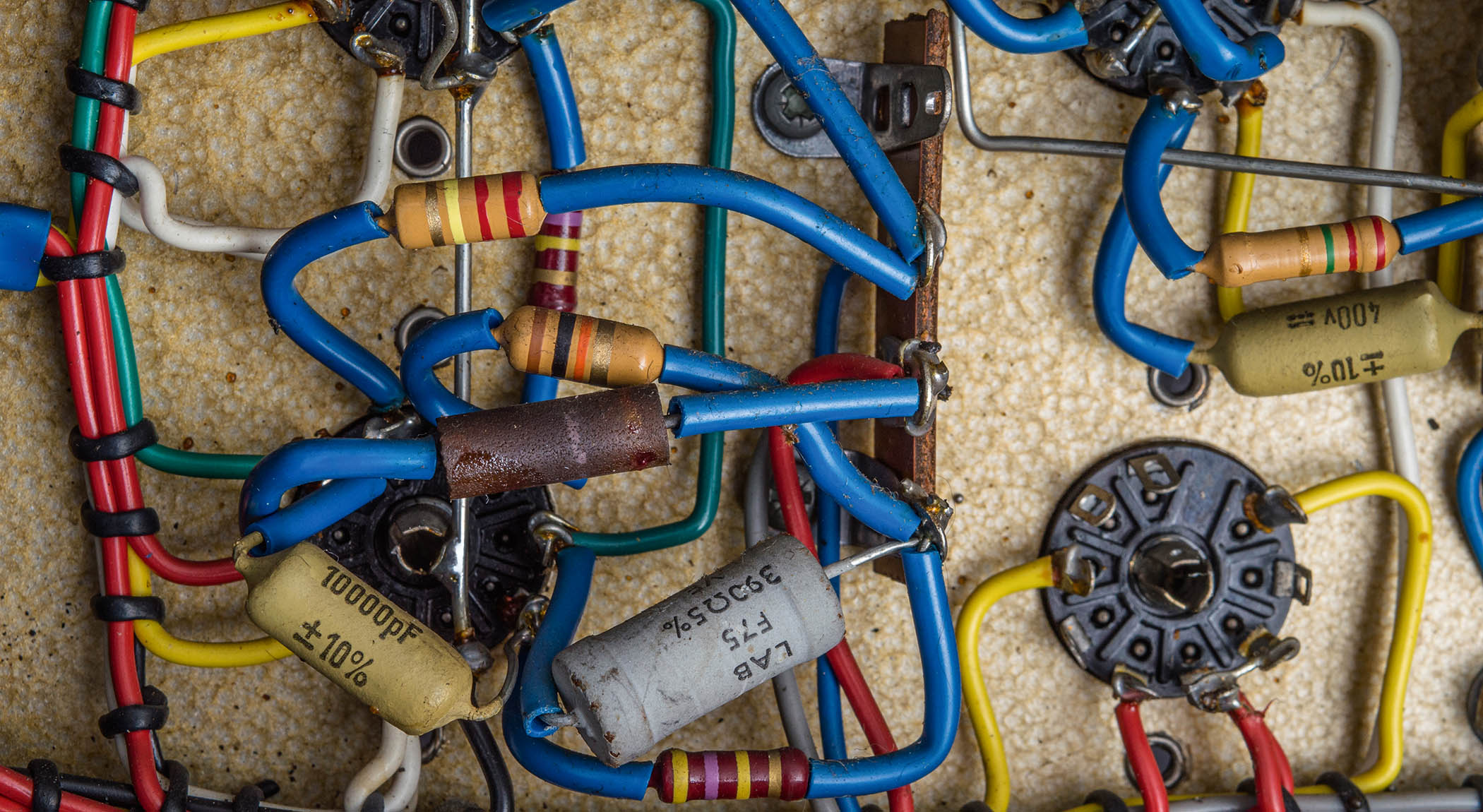
The Westminster’s EZ80 rectifier valve feeds a multi-stage filter capacitor. The first valve in the signal path is an ECC83, with one half providing gain and the other half used as a fairly conventional oscillator for tremolo.
The following pair of valves are oddities in a guitar amp and were more commonly used in budget record player amplifiers. They look like EL84s, but they’re actually ECL82s, and the glass enclosure contains a preamp style triode with fairly healthy gain along with a power amp pentode.
The triode sections are used for phase splitting and driving the pentode sections that operate in push-pull to generate around 10 watts.
Initial Assessment
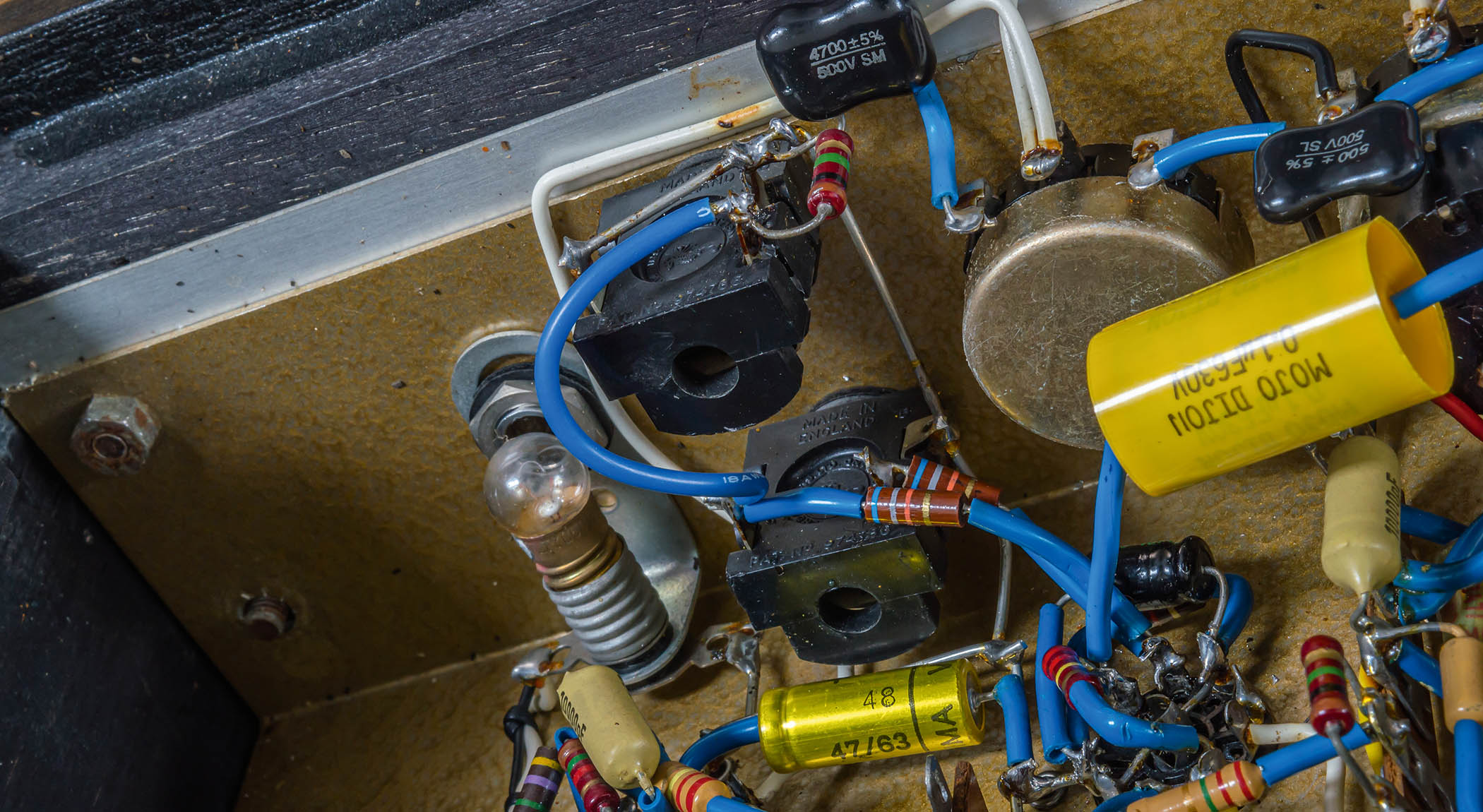
In stock form, the Westminster Mk II sounds somewhere between an edgy Vox and an undercooked low-powered Marshall. Like some of Fender’s earlier Tweed amps, the volume and tone controls interact, and turning the tone up fully for minimum treble roll-off also increases volume and gain.
The complicating factor is that the Westminster is bass-light, so you’re almost obliged to roll the tone back in order to prevent the amp from sounding too thin and shrill. Consequently, you have to rely on the volume control for overdrive, and that alone doesn’t release the Westminster’s full potential. It’s frustrating because the basic tone is impressive, but it’s clear that the circuit has a lot more grunt to give.
Sensible Precautions
If you notice any capacitors labelled ‘Hunts’, don’t bother to test them because they will almost certainly need replacing. Also replace both the 25µF electrolytic capacitors connected to the cathodes of the ECC83 and the ECL82s.
The schematic shows three 20µF filter capacitors in the power supply. All are contained in a canister and in this amp they are actually 16µF. These often function well despite their age, and so long as there are no signs of blistering or leakage, and the amp isn’t humming, these may be left in situ.
Visually inspect all the components for signs of heat damage. Any resistors that are discoloured or look like they are disintegrating should be changed. The 2.2k resistor feeding the second grid of both ECL82s looked like it had endured a tough life, so it was also replaced. With the essential renovation work complete, capacitors tested for leakage, the bias checked and the key voltage readings verified, you can move onto the fun stuff.
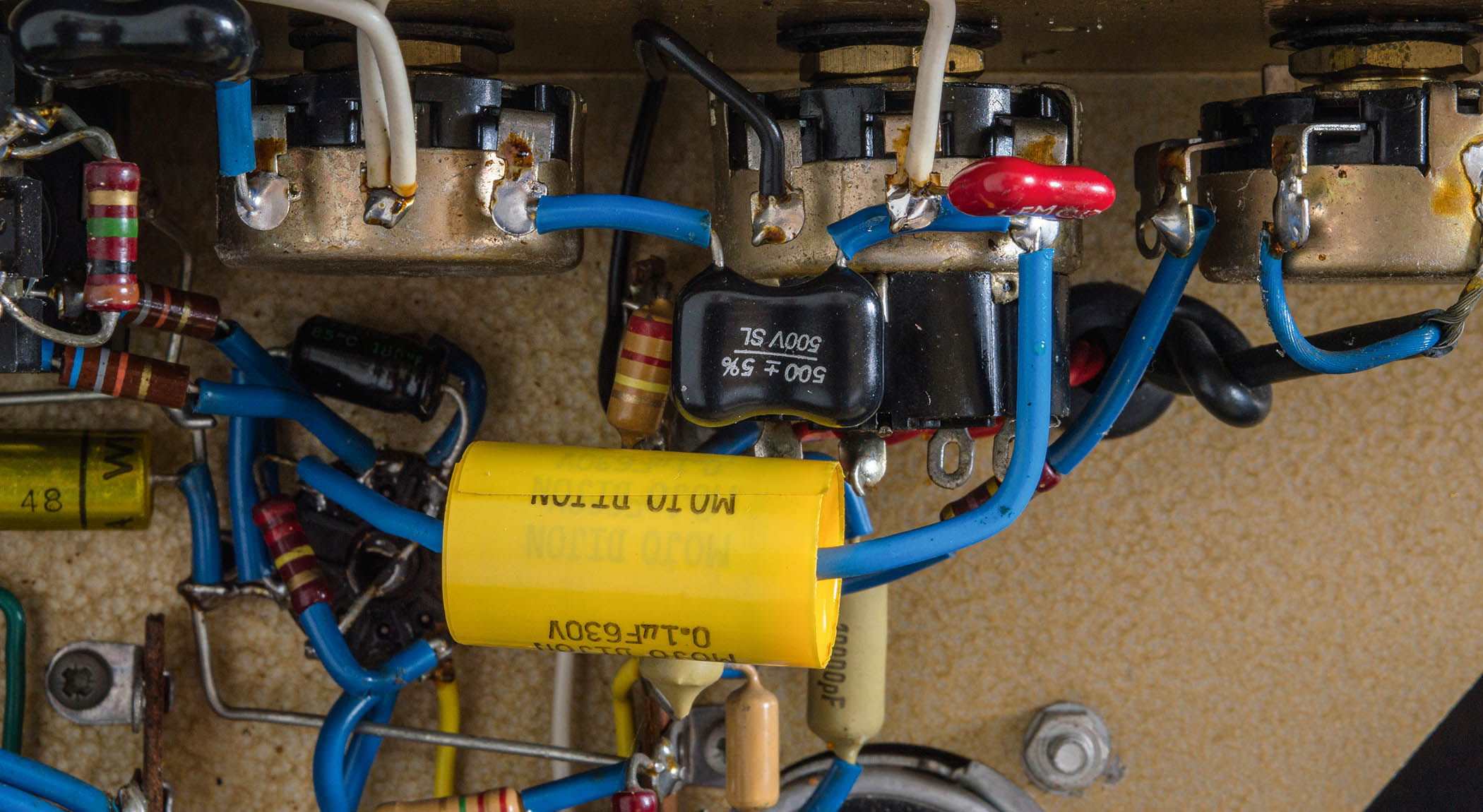
Input Mod
In the early days of instrument amplification, manufacturers often assumed that the amp would be used by two or more musicians simultaneously. That’s the reason early Tweed Fender amps often have a microphone input and a couple of instrument inputs that are both equal in level. In effect, they were designed as mini PA systems.
Much will depend on the speaker you’re using, and the downside is that you will start to hear an intrusive thump when the tremolo is activated
Although microphone inputs on guitar amps soon disappeared, the ‘mixer’ input configuration that allowed two players to share the same amp at equal volume persisted on some entry-level or budget amps. You can see this on the Vox AC4 and AC10, as well as the WEM Westminster.
When only one player is using it, half the guitar signal is dumped to ground before it even reaches the grid of the first valve stage. As a result, amps such as this are quieter than they should be and lack dynamics and gain. In other words, they sound a bit flat, but the solution here is simple because you can rewire the inputs to conventional high and low.
Rather than discuss it in detail, head to Robin Robinette’s website for a clear diagram. While you’re at it, you might also change the grid resistor values from 100k to 68k.
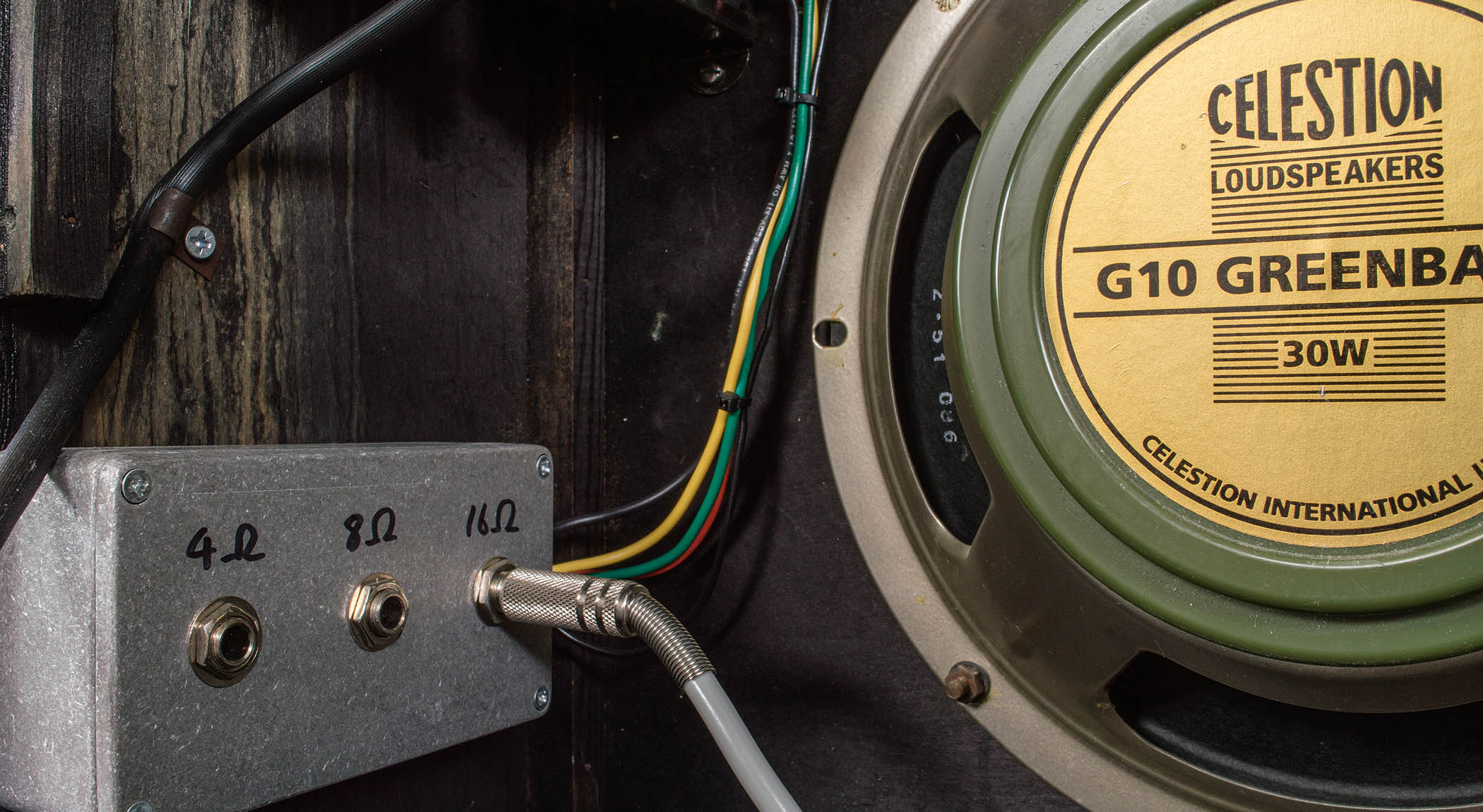
‘More Bass’ Mod
In stock form, the Westminster’s narrow frequency range is mostly confined to the upper midrange. To allow low frequencies to pass through a circuit you need larger capacitors, and values of 0.022µF, 0.047µF and 0.1µF are common in guitar amps. You can fatten up the Westminster’s tone by increasing capacitor values in the signal path.
There are two coupling capacitors wired in series between the anode of the first gain stage and the volume control – a 0.005µF and a 0.002µF – with a 220k resistor from the junction to ground.
These are unusually low in value individually, but wired in series the combined capacitance is even lower. This restricts the amount of low-end reaching the phase inverter and by experimenting with different values you can extend the bass response to taste.
In stock form, the Westminster’s narrow frequency range is mostly confined to the upper midrange. To allow low frequencies to pass through a circuit you need larger capacitors
Much will depend on the speaker you’re using, and the downside is that you will start to hear an intrusive thump when the tremolo is activated. We liked the tone best with the 220k resistor bypassed and a 0.1µF Mojo Dijon coupling the ECC83 directly to the volume control.
This rendered the tremolo unusable, but the amp sounded so good we decided to do without it while we devise a solution. Using larger value capacitors between the phase inverter and the power valves may be another option, but it would be a fiddlier job.
Treble Mod
Even with the input modification, the newly configured ‘high’ input doesn’t have the crystalline sparkle that makes so many of the classic Marshalls such amazing amps for clean tones.
A key difference between the Normal and Brilliant channels on many Marshalls is the presence of a Bright capacitor wired across the volume control. You can experiment with values between 47pF and 250pF to decide what suits the circuit and speaker.
Marshall used ceramic capacitors, but modern builders often prefer silver mica types. This mod allows more high-frequency content through the signal path at lower volume settings, and you won’t need to max out the tone control to get a bright tone and inadvertently push the amp into unwanted overdrive.
Speakers & Transformers
The stock Elac speakers can sound wonderful, and the one in this amp is a stellar example – it can handle maximum volume without creating the impression that it is about to disintegrate – but this is rarely the case. Elacs found in Watkins and Vox amplifiers often sound like they’re long past their use by date, and finding people who can do a good job of re-coning them is becoming difficult.
Although there are plenty of 10-inch guitar speakers out there, the complicating factor is that the Westminster’s output transformer expects to ‘see’ a four-ohm speaker. The overwhelming majority of aftermarket speakers, however, are rated at eight or 16 ohms.
There was no need to change the speaker in this Westminster, but I did decide to replace the tired speaker in my own Watkins Westminster. In order to do that, the output transformer had to be replaced, too.
Chris Fantana from Rift amps suggested any output transformer designed for push-pull EL84 guitar amps would be fine, and a Heyboer 7046 was ordered from Allparts UK. This transformer is highly regarded by 18-watt amp builders and it provides four, eight and 16-ohm output taps.
The Westminster’s stock output transformer is fairly small, and even after it has been disconnected there isn’t sufficient space for the Heyboer on the chassis. Instead, it can be mounted onto the cabinet.
Rather than leave the unwanted taps redundant, you can connect the transformer wires to three separate output jacks mounted in a metal enclosure and mount that onto the side of the cabinet. This makes it straightforward to swap the onboard speaker or connect the Westminster to external speaker cabinets.
Crunch Time
Although the Westminster can sound louder with an upgraded output transformer and a more efficient speaker, it will never generate enough oomph to make your flares flap.
Once modded, it can take you from delicately sparkling cleans to ferociously thrilling crunch at a level that should be sufficient for smaller gigs and sounds absolutely huge for recording. Best of all, it never loses its British accent.
- Thanks to Andrew Raymond and Vintage ‘n’ Rare Guitars in Bath, UK.
Huw started out in recording studios, working as a sound engineer and producer for David Bowie, Primal Scream, Ian Dury, Fad Gadget, My Bloody Valentine, Cardinal Black and many others. His book, Recording Guitar & Bass, was published in 2002 and a freelance career in journalism soon followed. He has written reviews, interviews, workshop and technical articles for Guitarist, Guitar Magazine, Guitar Player, Acoustic Magazine, Guitar Buyer and Music Tech. He has also contributed to several books, including The Tube Amp Book by Aspen Pittman. Huw builds and maintains guitars and amplifiers for clients, and specializes in vintage restoration. He provides consultancy services for equipment manufacturers and can, occasionally, be lured back into the studio.
“If you’ve ever wondered what unobtanium looks like in amp form, this is it”: Played and revered by Stevie Ray Vaughan, Carlos Santana, and John Mayer, Dumble amps have an almost mythical reputation. But what's all the fuss really about?
“For the price, it’s pretty much unbeatable”: Harley Benton JAMster Guitar review








![[from left] George Harrison with his Gretsch Country Gentleman, Norman Harris of Norman's Rare Guitars holds a gold-top Les Paul, John Fogerty with his legendary 1969 Rickenbacker](https://cdn.mos.cms.futurecdn.net/TuH3nuhn9etqjdn5sy4ntW.jpg)





